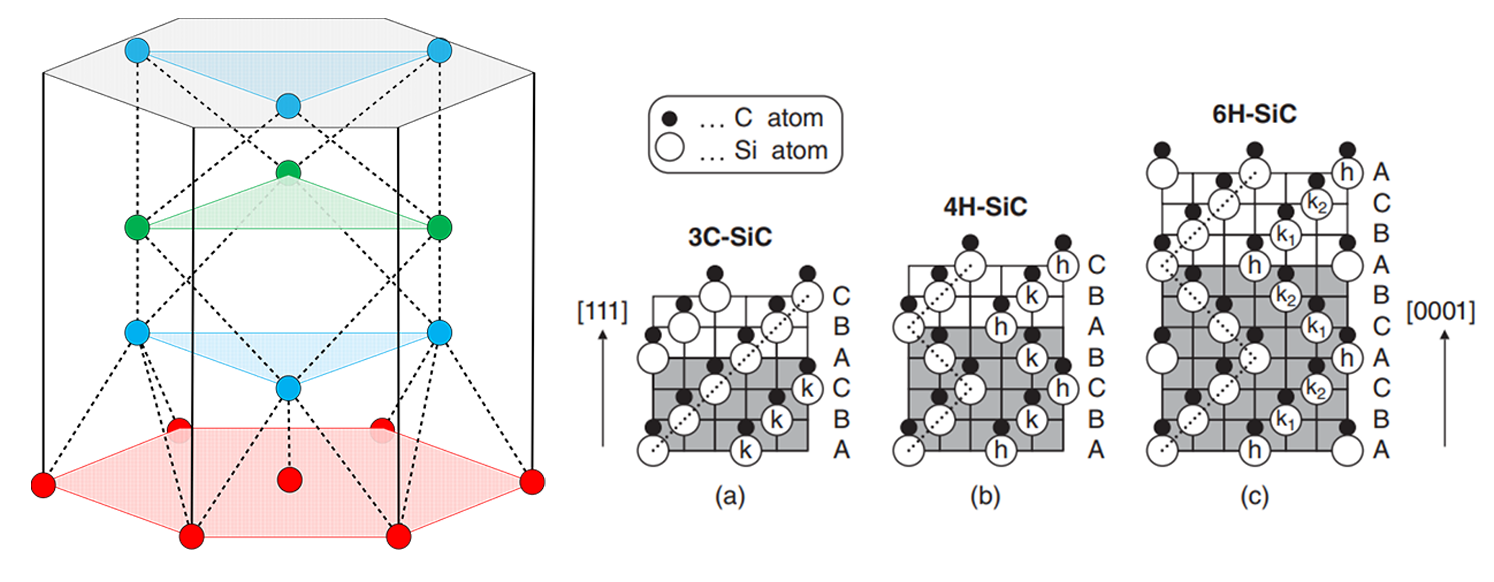SiC crystal:
The 4H-SiC crystal expressed by the conventional basis vector is a hexagonal crystal family, which is the source of "H" (Hexagon) in 4H-SiC. There are 3 possible positions of SiC molecule in the process stacking, and different polymorphic structures (more than 200) are formed by various stacking periods and cycle modes.
ABCB stacking is adopted for 4H-SiC at a period of 4, which is also the origin of "4" in 4H-SiC.

What are the advantages of SiC materials?
Silicon carbide is a typical representative of wide band gap semiconductor materials and is an ideal semiconductor material for applications with high temperatures, high frequencies, and high power.
Wide bandgap: SiC has a bandgap three times wider than that of Si, which enables the energy growth of valence electron transition to free electrons, enabling SiC devices to be used without failure in extreme environments of high temperature, high pressure and strong radiation.
High critical breakdown electric field strength: With a critical breakdown electric field strength 10 times greater than Si, SiC can withstand a significantly higher voltage than Si of the same thickness. In other words, SiC will achieve an on-resistance much lower than that of Si under the same withstand voltage.
High thermal conductivity: SiC has a thermal conductivity 3 times greater than that of Si, meaning SiC devices can work with a more simplified heat dissipation system. This high level of thermal conductivity leads to a great reduction in cooling costs.
High saturated electron drift velocity: The saturated electron drift velocity is nearly three times that of Si, meaning SiC devices will be able to work at higher switching speeds and switching frequencies, greatly reducing the device's switching loss. In addition, passive devices like filters will shrink significantly in size, resulting in a miniature, lightweight system.





